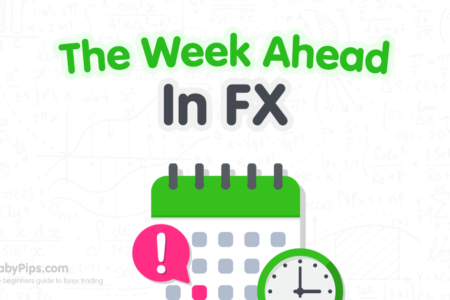While we wait for more updates on the Israel-Hamas conflict, major economies like the U.S. and China will print economic reports that may give us more clues on their growth trajectories.
Meanwhile, countries like the U.K., Canada, Eurozone, Japan, and New Zealand will drop their latest inflation figures and give us a clearer picture of global price trends.
Before all that, ICYMI, I’ve written a quick recap of the market themes that pushed currency pairs around last week. Check it!
And now for the closely-watched economic indicators on the calendar this week:
U.K.’s labor market data
On October 17 at 6:00 am GMT, the U.K. is expected to print more jobless claimants and less wage growth in September compared to August.
Claimant count may pump up from 0.9K to 2.3K, average earnings could slow down from 8.5% to 8.3%, and the unemployment rate is expected to steady at 4.3%.
Remember that last week’s shaky GDP report already supported the Bank of England’s (BOE) decision to keep its interest rates steady in September. If we see weaker labor and wage data as leading indicators suggest, then concerns over a second round inflation or a higher BOE interest rate may ease.
Inflation updates
Will this week’s inflation reports encourage concerns of stubbornly high global inflation and a higher-for-longer interest rate environment?
Higher petrol prices are expected to have boosted New Zealand’s consumer prices (Oct 16, 9:45 pm GMT) from 1.1% in Q2 to 1.9% in Q3.
Ditto for Canada (Oct 17, 12:30 pm GMT), which could see its annual inflation speed up from 4.0% to 4.5% in September even as its core CPI steadies at 3.3% and its monthly CPI slows down from 0.4% to 0.0%.
Traders will pay closer attention to Canada’s CPI release this week as it’s one of the last major indicators due before the hawkish Bank of Canada (BOC) announces its October monetary policies next week. Hotter-than-expected Canadian inflation ups the odds of a BOC rate hike.
Meanwhile, U.K. inflation (Oct 18, 6:00 am GMT) is expected to ease from August to September. Annual headline CPI could slow down from 6.7% to 6.6% while core CPI slips from 6.2% to 6.0%.
The Eurozone (Oct 18, 9:00 am GMT) will also publish its final CPI reading but the markets mostly expect the region to maintain its initial 4.3% headline and 4.5% core CPI figures.
Last but not least, Japan’s national core CPI will be printed on Oct 19, 11:30 pm GMT. Consumer prices could slow down from 3.1% to 2.7% in September even amidst speculations that BOJ members have raised their inflation expectations.
Growth-related US data
Can’t get enough of potential catalysts for the U.S. dollar’s price action? Let’s add a few growth-related reports into the mix!
On October 17 at 12:30 pm GMT we’ll see Uncle Sam’s retail sales numbers. Word around is that retail activity will be boosted by higher vehicle and gasoline prices. Despite that, headline retail sales could still slow down from 0.6% to 0.3% while core retail activity could dip from 0.6% to 0.2%.
Closely following at 1:15 pm GMT is the industrial production data, which could show a flat (0.0%) reading in September after a 0.4% uptick in August.
While not growth-related, Fed Chairman Powell’s speech on Oct 19 at 4:00 pm GMT may also move USD’s price action.
In fact, he and a bunch of FOMC members including Philip Jefferson (1:00 pm GMT), Austan Goolsbee (5:20 pm GMT), Michael Barr (5:30 pm GMT), Patrick Harker (9:30 pm GMT), and Lorie Logan (11:00 pm GMT) may provide a clearer picture of the Fed’s biases regarding a 25bps rate hike before the year ends.
China’s data dump
Slower-than-expected inflation data from China last week cast doubts on the country’s economic growth trajectory. We’ll get more data this week when China publishes a bunch of top-tier data on October 18 at 2:00 am GMT.
GDP is seen dropping from 6.3% to 4.5% from a year ago in Q3 while fixed asset investment (3.2% ytd/y) and unemployment rate (5.2%) could maintain their growth rates.
Meanwhile, the closely watched industrial production could slow down from 4.5% to 4.3% while retail sales activity could speed up from 4.6% to 5.0%.
Oh, and don’t forget that the PBOC is dropping its 1-year (3.45%) and 5-year (4.20%) loan prime rates on Friday at 1:15 am GMT! Markets aren’t expecting changes from the central bank so surprise rate cuts might give risk assets a boost during the Asian session.
